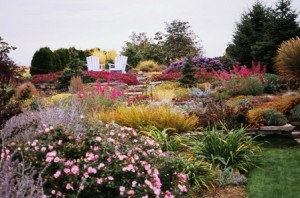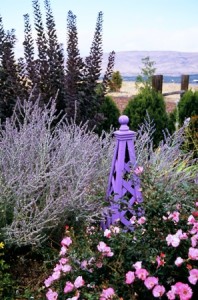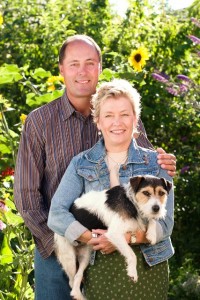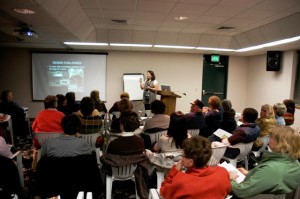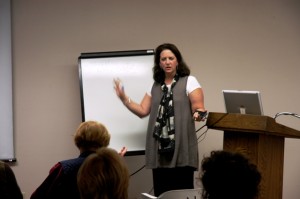If you’re like many of my gardening friends who can’t resist the charming character of old farm implements or tools, you probably have a few elderly hand-trowels in your collection. I know I’m not the only one who actually begs, buys and forages for old nozzles, flower frogs, watering cans and metal implements for digging soil!
Whether displayed on a shelf or hanging from a wall inside the potting shed, that slightly rusted, weathered and distressed garden trowel, cultivator, hoe or rake appeals to many of us because the paint is chipping and the handle is probably made from real wood and screws rather than plastic and staples.
My pals Greg Graves and Gary Waller, owners of Old Goat Farm in Graham, Wash., are two such hunter-gatherers.
It helps that the men acquired a Victorian farm house and a similarly pedigreed landscape (and a barn and several outbuildings) several years ago. Greg and Gary moved from the city to the country where they have created an appealing lifestyle-business that includes raising poultry, peacocks and goats (yes, there are a few goats here, even an “old” goat), propagating and selling unusual plants, and hosting legions of visitors to their Open Garden days in summertime and to their Holiday Teas in December.
Gary, an award-winning floral designer, has amassed an impressive collection of holiday decorations (that’s what the barn is for – to store everything from santas and snowmen to ribbons, ornaments and lights).
He and Greg decorate each room of the farmhouse with a specific Christmas theme and then invite their customers, friends, local senior groups and word-of-mouth partakers to attend their Holiday Teas.
People walk from room to room (bath included!), enjoy the highly-detailed decorations, sip a warm drink and sample the mouthwatering desserts. Greg tells me that Old Goat Farm will serve tea to 450 persons this month.
Two of the teas are fund-raisers for causes they support, but basically the entire endeavor is a gesture of community outreach. “We keep the price low because we don’t want to make it too costly for the senior groups to come,” Greg says.
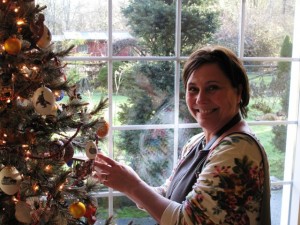
Here's Lorene, studying the tiny kitchen tree that's an ode to poultry on the farm (Gary hollowed-out all sorts of the eggs and decoupaged them with hen images).
Greg invited fellow garden writer Lorene Edwards Forkner and me to join last Friday’s tea when a last-minute cancellation opened up two slots at the table.
We donned our festive attire and drove to Graham/Orting. If you know about the city of Tacoma, the Graham/Orting area is due east of it. The Garden Conservancy-supported Chase Garden is a nearby horticultural destination.
Let me set the scene up on our arrival:
Festooned in garlands, plaid ribbons and old garden implements (!) the soft yellow farmhouse greets its guests. The entry wreath hangs from the front gate with a trowel and worn wood dibble (a planting device for enlarging seed or bulb holes).
Who wouldn’t love a huge covered porch that wraps around three sides of the 100-year-old Victorian residence? Each post is dressed in holiday finery, a pair of rusty old tools gathered up with an enormous lodge pole pinecone and the red-and-green plaid ribbon.
The cheerful door decor has at its center a set of vintage child’s set of play tools – a rake and a shovel. Criss-crossed with more ribbon and cones, they welcomed our arrival (see photo at top).
A galvanized watering can becomes an impromptu vase, filled with greenery gathered from the wooded landscape. And we feel transported to a century ago (almost) while touring the garden and the home.
One of our favorite destinations at Old Goat Farm is “Linda’s Garden,” designed by Greg to memorialize the late, dear friend to us all, Linda Plato.
We lost Linda five years ago this month, a premature death brought on by breast cancer. Linda and Greg met in horticulture school as they both began their second careers. They worked together at the Elizabeth C. Miller Botanical Garden (where Greg is still on the staff as head gardener). They traveled the world to see gardens. Lorene and I were just happy to be small stars in Linda’s orbit. And we miss her.
Linda’s garden is an homage to topiary. For you see, Greg and Gary would never have moved here to Old Goat Farm if it was not for Linda dragging Greg out there six years ago to buy topiary from the former owner who was liquidating her stock. As Greg tells the story on his web site:
Story of Old Goat Farm
In December of 2004, quite by accident, we found this beautiful little place while plant shopping with our good friend Linda. It is located just outside of Orting, WA, tucked below Mt. Rainier. We fell in love with this place, and by March of 2005, we were the owners of Old Goat Farm.It is kind of a throwback to a simpler time with its 100-year-old farmhouse and cute barn and nursery. The garden is dotted with topiaries which give it a magical quality.
“Linda once said: ‘What’s better than a row of topiaries? A double-row of topiaries!,'” Greg explains. And that’s why you will see double-boxwood balls, pyramids, ovoid shapes and cubes lining both sides of the pathway that loops through the shaded, secluded and peaceful Linda’s Garden. Hurrah! It never fails to put a smile on my face. Please enjoy the photos of our visit to Old Goat. May we all be so lucky to have people like Greg and Gary, Lorene, and our dear Linda pass through our lives!
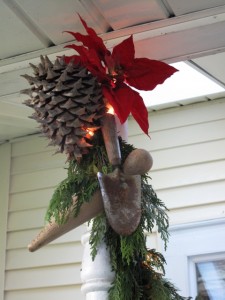
A cedar garland wraps around the porch columns and each is topped with a huge pinecone and more vintage tools.
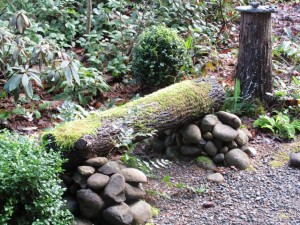
A moss-covered "bench" resting on two piles of stones. Note the mahonia that has seeded itself in the rockery.
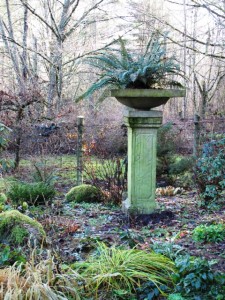
For amazing drama in the winter landscape, place an evergreen fern in an urn on top of a pedestal. Wow.









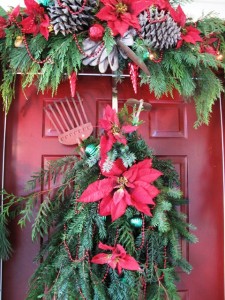
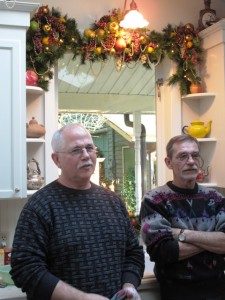
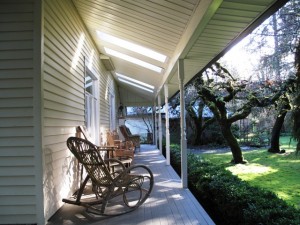
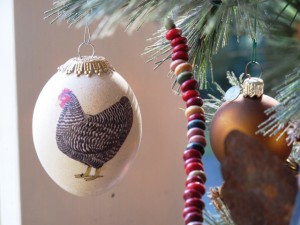
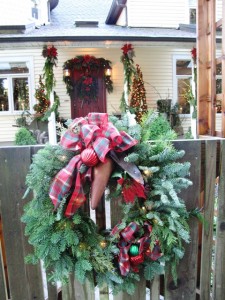
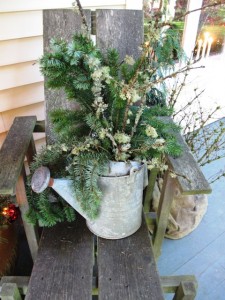
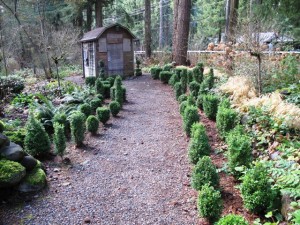
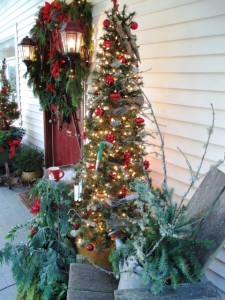
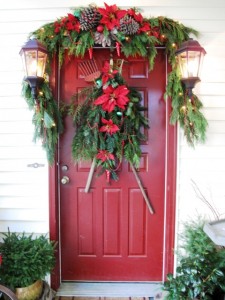
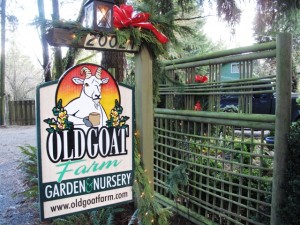
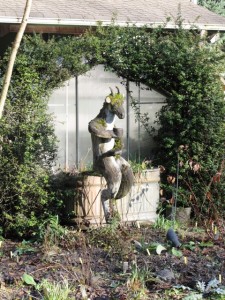
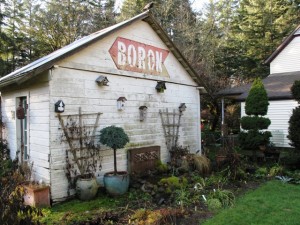
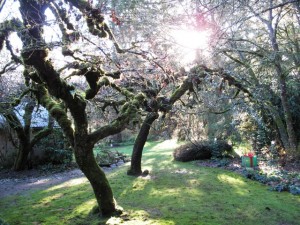
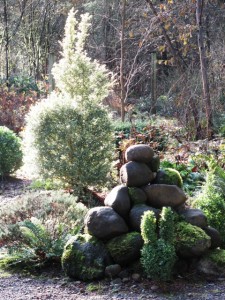
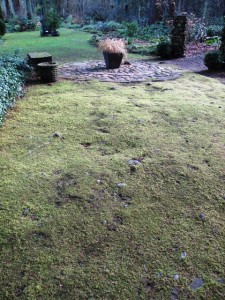
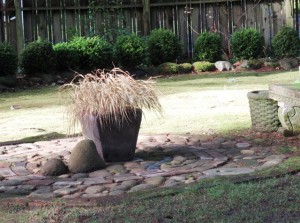
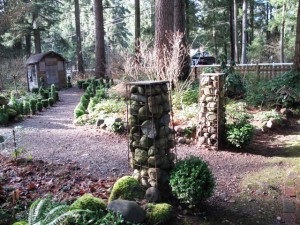
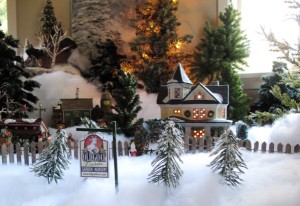
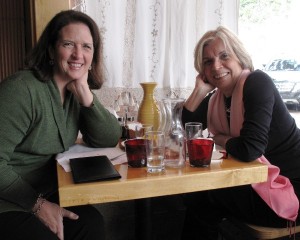
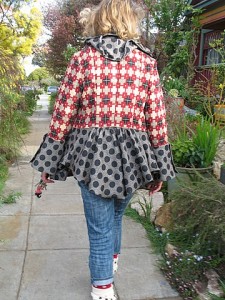
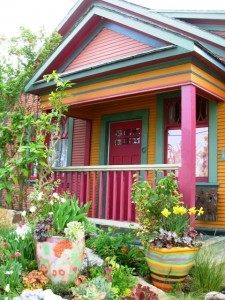
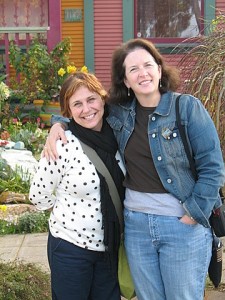
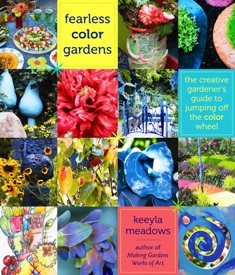 Her new book, Fearless Color Gardens: The creative gardener’s guide to jumping off the color wheel (
Her new book, Fearless Color Gardens: The creative gardener’s guide to jumping off the color wheel (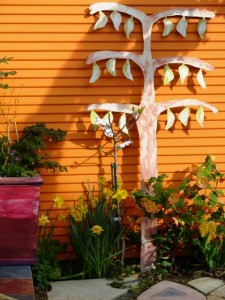
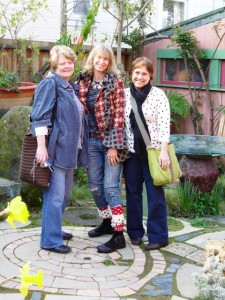
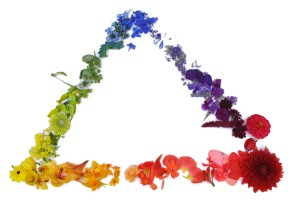
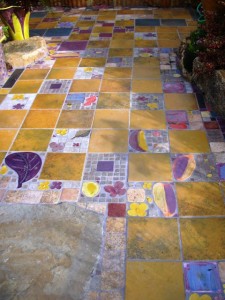
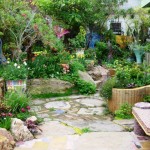
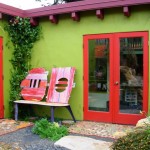
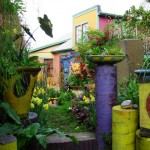
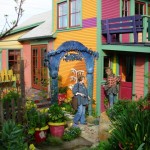
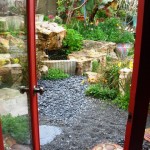
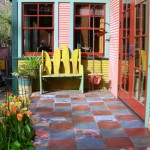
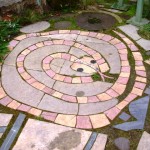
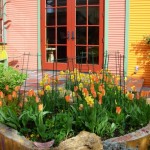
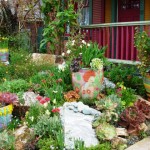
 Two years ago, I read Julie Powell’s wonderful debut memoir, “Julie & Julia.” Her story of spending 365 days cooking every recipe in Julia Child’s “Mastering the Art of French Cooking” was electrifying and compelling.
Two years ago, I read Julie Powell’s wonderful debut memoir, “Julie & Julia.” Her story of spending 365 days cooking every recipe in Julia Child’s “Mastering the Art of French Cooking” was electrifying and compelling.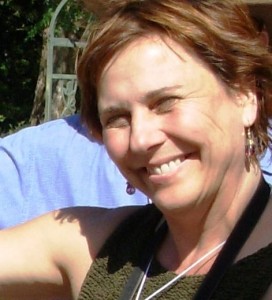
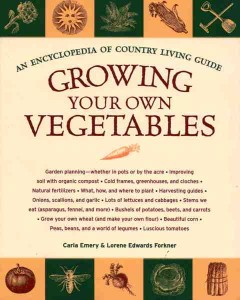 It’s a good thing that Lorene was a back-to-the-earth gal long before modern-day foodies who are just discovering the joys and benefits of tending to their own edible plants.
It’s a good thing that Lorene was a back-to-the-earth gal long before modern-day foodies who are just discovering the joys and benefits of tending to their own edible plants.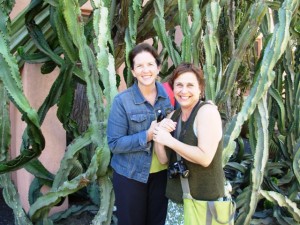
![20060713_shd_wyles_054 The perky roofline of Michelle and Rob Wyles's hedge-enclosed gardenhouse is seen in relief against an expansive eastern Washington sky [photo by William Wright]](https://www.slowflowerspodcast.com/wp-content/uploads/2009/04/20060713_shd_wyles_054-300x200.jpg)
